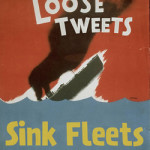Let the fun begin!
If you look after truth and goodness, Beauty looks after herself.
Reading: Rapt: Attention and the Focused Life
 Not since Mihaly Csikszentmihalyi’s book Flow, have I encountered such a good book about attention that, you guessed it, captured my attention. In Rapt: Attention and the Focused Life, Winifred Gallagher discusses the basic premise that you are what you pay attention to, or to be more precise, what you choose to pay attention to.
Not since Mihaly Csikszentmihalyi’s book Flow, have I encountered such a good book about attention that, you guessed it, captured my attention. In Rapt: Attention and the Focused Life, Winifred Gallagher discusses the basic premise that you are what you pay attention to, or to be more precise, what you choose to pay attention to.
She blends contemporary psychology with modern neuroscience to explain the phenomenon of attention, and debunk common misconceptions about things like multitasking–one second, off to check my twitter feed–ok, now I’m back–what was I saying–oh yeah, something about multitasking. Or was it attention. Get the idea?
Anyhow, the book is replete with cited studies and is well footnoted. Common themes around mindfulness meditation, effective “self-distraction”, and utilizing the “zone” bring the theoretical conversation back to day-to-day life and will undoubtedly make you look at your daily routine differently.
It turns out that Gallagher has also written about one of my other favorite subjects, how our surroundings can impact our thoughts and emotions in The Power of Place. My reading stack just got a little taller.
Gallagher, Winifred. Rapt: Attention and the Focused Life
Painters in the grand style were not concerned with style – they drew with clarity and rigor. Style was born from their work, and just as thought does not think about the sound of its voice nor even the rhythm, but creates them through its act – so they did not … Style must arise naturally from one’s attention to an object and it disappears as the awareness of this attention decreases.
The separation of the sciences and the arts is merely a matter of convention and convenience. But in thinking and acting, man transcends these categories which are simply particular acts. Each one implicitly contains the other.
Remembering NASA’s X-15 gallery at CNET.
Try not to become a man of success, but rather try to become a man of value.
My experience is what I agree to attend to.
Reading: Tribes
 This weekend’s read was Seth Godin’s Tribes, essentially a collection of tidbits on leadership in today’s increasing connected world. The internet has eliminated geography and reduced the costs of communication to nil. Factor in the rise of social networking, and a space for highly leveraged leadership opens up.
This weekend’s read was Seth Godin’s Tribes, essentially a collection of tidbits on leadership in today’s increasing connected world. The internet has eliminated geography and reduced the costs of communication to nil. Factor in the rise of social networking, and a space for highly leveraged leadership opens up.
Seth basically challenges the reader. While some portions seemed a little disjointed, I did appreciate his consistent theme of challenging the status quo and dog-eared this alliteration on leadership:
Leaders create culture around their goal and involve others in that culture.
Leaders have an extraordinary amount of curiosity about the world they’re trying to change.
Leaders use charisma (in a variety of forms) to attract and motivate followers.
Leaders communicate their vision of the future.
Leaders commit to a vision and make decisions based on that committment.
Leaders connect their followers to one another.
And in accordance with the author’s recommendation, it’s sitting ready if you’d like to borrow it.
Godin, Seth. Tribes: We Need You To Lead Us


